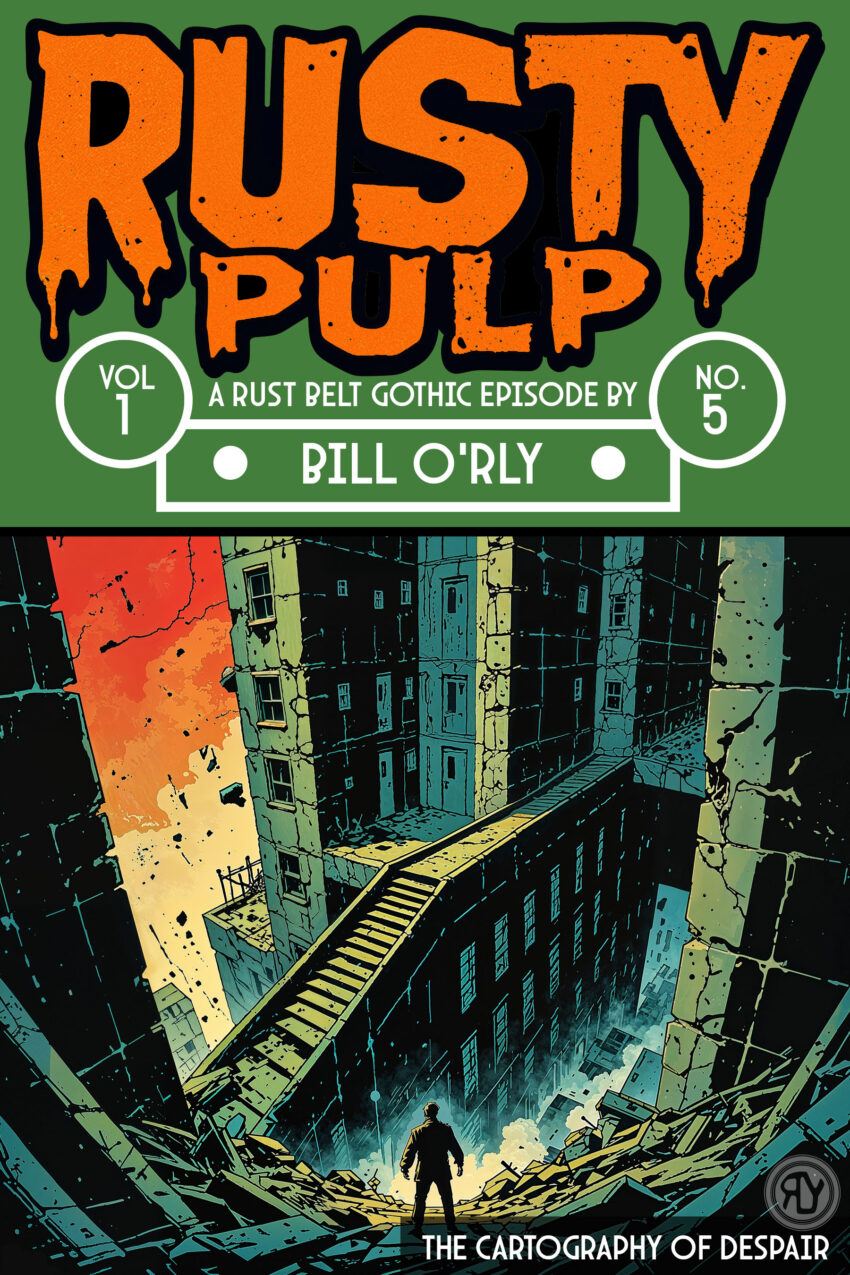66 pgs.
Architectural surveyor Maria Rodriguez is sent to evaluate Riverside Towers, a decaying public housing complex scheduled for demolition. Inside, she discovers impossible changes – hallways that stretch infinitely, rooms that shrink with despair, and walls that pulse like living tissue. The residents – maintenance man Ramon, elder Mrs. Santos, exhausted worker Jerome, and his children – reveal that the building reacts to their emotions, reshaping itself in response to hope, grief, and fear.
As Maria investigates, she uncovers the building’s origin: it was designed in the 1970s by Dr. Ingrid Hoffmann, a Bauhaus refugee who envisioned “psycho-responsive architecture” that could heal collective trauma. But decades of neglect turned the structure into a vessel for suffering – it absorbs human pain but cannot transform it. Maria’s horror deepens when she finds her own bureaucratic report among the city archives: her earlier “efficiency recommendations” caused the very social-service cuts that doomed the residents.
A tech corporation, Aura, offers a solution: the Harmony Grid, a sonic control system that pacifies emotional volatility. Once installed, it erases the building’s distortions – but also the residents’ humanity, flattening their emotions into sterile calm. Children stop dreaming, conversations die, and the community becomes docile. Realizing the system is a technological lobotomy, Maria shuts it down and helps the residents learn to coexist with the living architecture instead of suppressing it.
Together they develop ways to heal the structure through collective emotion—community dinners, storytelling, focused anger, and hope. The building begins to stabilize on its own, defending them from bureaucrats and developers who seek to erase them. By the end, Maria joins the residents permanently, helping transform Riverside Towers into a model of community-driven, emotionally responsive architecture.
The Cartography of Despair is an allegory of systemic neglect and renewal, where the physical environment records social trauma – and healing begins only when empathy replaces control.
FIRST PAGE EXCERPT
“The key Ramon Delgado handed her was wrong.
Maria’s fingers, calloused from years of gripping
drafting pencils and laser measures, registered the
difference immediately. Brass instead of dull steel,
warm from his palm instead of cold from the ring.
The lobby air tasted of dust and burnt coffee, thick
on her tongue like the residue of a thousand small
defeats.
“The building gets moody,” Ramon explained, his
voice a low rumble that seemed to emerge from the
concrete itself. Lines around his eyes mapped
eighteen years of power outages and broken
heating systems; the set of his shoulders bore the
weight of maintenance requests that would never
be answered. His breath carried the faint scent of
peppermint gum, a small dignity maintained against
the taste of institutional failure. “The locks change
their minds.”
Maria had arrived that morning expecting routine
documentation, another building to assess and
condemn in the endless cycle of urban renewal.
The official report already described Riverside
Towers as “structurally unsound” and “economically
unviable,” phrases she had used herself in a dozen
similar reports. But standing in the lobby, she felt
the first stirrings of unease.”

